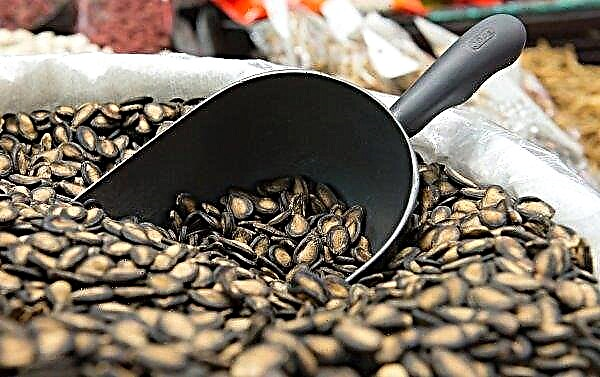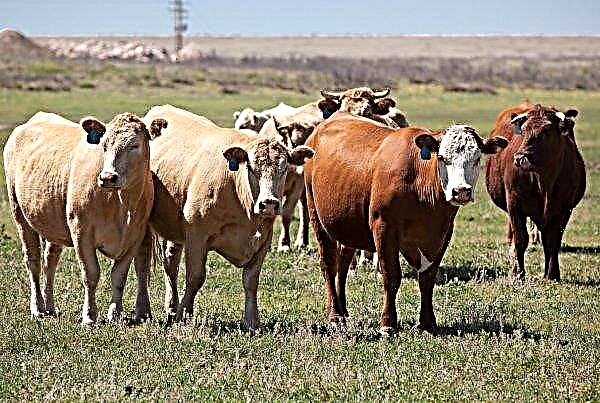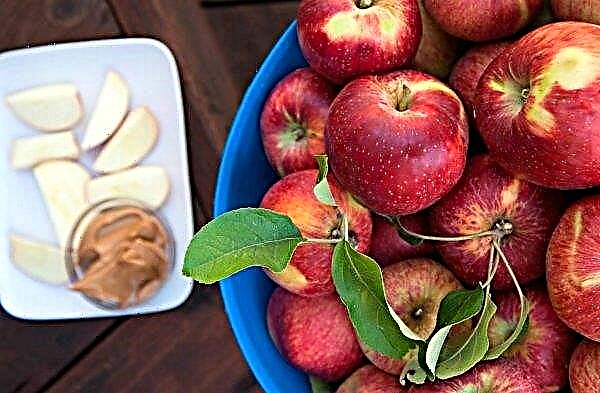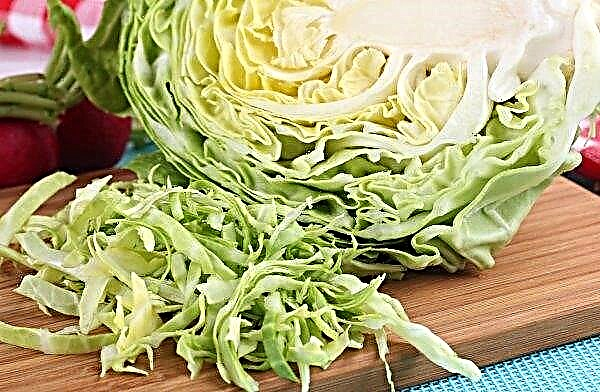Cucumbers for the average citizen of our country are almost everyday food, whether they are fresh or canned. But not everyone wants to buy them from store shelves, preferring to grow cucumbers on their own both in the greenhouse and in the open ground. Let's talk in more detail about the choice of variety, planting and care technology, the rules for combating diseases and pests.
The basic rules of growing cucumbers
To get a good crop of cucumbers in your area, use the tips and rules below:
- The yield and taste of vegetables will depend on the correct selection of cucumber varieties. Choose a variety depending on the region of residence, the type of soil and your taste preferences.
- Planting should be carried out after preparing the seeds in previously prepared soil. At the same time, the microclimate in the greenhouse should be the most optimal, and when planting in open ground, you need to wait for suitable weather conditions.
- It is important not to forget about caring for plants. Watering, weeding, weeding, dressing and garter (for certain varieties) should be carried out regularly.
- Pest control is also one of the stages of growing cucumbers. It is necessary to try to overcome pests by folk methods without the use of chemicals. So your crop will remain environmentally friendly.
- Harvesting. No matter how trite it may sound, but you need to know how to properly harvest. It is necessary to collect small cucumbers in advance, otherwise they will begin to turn yellow. In addition, regular harvesting will allow the bushes to bear fruit in the future without a strong yield loss.

What varieties to choose
Varieties of cucumbers that can be grown in the country in open ground are not quite suitable for growing in a greenhouse. Breeders take into account more than a dozen parameters when breeding new varieties, so they are radically different. The difference lies in the regions of cultivation, microclimate, soil type, climatic features, etc.
For the greenhouse
Cucumbers for the greenhouse can be divided into four categories according to the ripening dates: super-early, early, mid-ripening and late-ripening.
The following is a list of suitable cucumbers for greenhouses, grouped precisely by maturity:
- Super early - Bettina, Capricorn, Aristocrat, Vocal. All of them are universal, resistant to many diseases, are characterized by increased or normal productivity and good taste.
- Early - Goosebump, Dynamite, Emelya, Mother-in-law. The fruit length of all representatives, except Emelya, reaches 12 cm. Emelya differ in length up to 15 cm, therefore it gained fame as a salad variety of cucumber. Early varieties ripen 40–45 days after planting and are distinguished by a large number of crops per square meter of plantings.
- Mid-season - Annushka, Sunny, Wisconsin, Rodnichok, Rafael. It takes about 50 days to ripen these representatives of the pumpkin family. Only Rafael is radically different from his brethren, whose fruit length reaches 25 cm, which is almost twice the length of the fruits of other mid-season varieties.
- Late ripening - Nezhensky, Crunch, Ob. Fruits after ripening remain small, approximately 8-10 cm in length and weighing no more than 100 g. Late ripening varieties are well suited for long-term storage and preservation.

For open ground
Varieties for open ground are conditionally divided into two large groups: self-pollinated and bee-pollinated. The main difference that you need to know is that the fruits of bee pollinated varieties are tastier, they are more fragrant. Those that are pollinated without the participation of bees give a large crop, are unpretentious to weather conditions and are resistant to many diseases.
Did you know? Cucumber consists of more than 95% water. That is why this garden crop needs frequent watering for good productivity.
The most popular bee pollinating varieties are: Faithful friends F1, Lord F1, Farmer F1, Nezhinsky F1. The first variety produces small crunchy fruits with small, barely noticeable white stripes. Faithful friends F1 is resistant to many diseases and pests, matures in about 40 days and is well suited for salting.
The remaining varieties are also resistant to adverse weather conditions and are distinguished by the absence of bitterness. Nezhinsky F1 is a late cucumber, but many people like its extraordinary taste.
Among self-pollinating varieties on the territory of our country, Claudia F1, Ant F1, Zozulya F1 are very popular. The first grade is late ripe, the other two are early ripe, so they are better suited for fresh consumption or for the preparation of salads.
Features of planting seedlings and further care
You need to grow cucumbers correctly. Preparing seeds, planting seedlings and further care - all this will significantly affect the quantity and quality of the crop.
The timing
In a greenhouse, cucumbers can be planted year-round if the microclimate optimal for this is maintained there and the ground masses are heated by a thermoregulation system to a depth of about one meter.
In a greenhouse, these vegetables can be grown even in winter, if you maintain an internal temperature of at least + 18 ° C during planting and in the first 10 days after it and at least + 13 ° C in the future. It must be remembered that the colder inside the greenhouse, the longer the cucumbers will ripen.
In open ground, you can plant both seeds and seedlings, but the timing of planting will vary. Seeds can be planted under the film at the end of April, and in some regions even at the beginning or middle of the month. The main thing is to make sure that the probability of night frost returning at the time of landing will be zero.
Important! Planting cucumbers in open ground is limited in time. Planting after June 5 is fraught with a small amount of yield.
You can plant seedlings in open ground from May to June. It all depends on the region and its climatic conditions. Agronomists recommend planting only when the earth warms up well and the average daily temperature is set at at least + 18 ° C.
Soil requirements
Cucumbers prefer that there are a lot of nutrients in the soil, so the choice of a place of planting should be taken very seriously. Loamy and loamy soils are best suited, with an average level of acidity and a rich mineral composition.
If your site is dominated by heavy soil, then in early spring it must be plowed to a depth of at least 8 cm. The best predecessors of cucumber are considered to be potatoes, onions, cabbage and tomato. It is not recommended to plant cucumbers in the place where representatives of the pumpkin family grew over the past three years: squash, watermelon, squash.
The best predecessors of cucumber are considered to be potatoes, onions, cabbage and tomato. It is not recommended to plant cucumbers in the place where representatives of the pumpkin family grew over the past three years: squash, watermelon, squash.
Planting seedlings in the ground
You need to prepare for planting seedlings in advance. You need to cook not only seedlings, but also a plot for planting. Weeds and debris must be removed from the fall, and in the early spring, the land will be plowed.
On the day of disembarkation, a handful of rotted manure or compost is introduced into each planting hole. The distance between the pits should be at least 20 cm, between rows - 50-60 cm. Sprouts need to be planted together with clods of soil, so as not to damage the root system of young cucumbers.
It is necessary to pour a liter of clean water into each hole, then fill it with soil and tamp a little.
It is important to prevent excessive evaporation of moisture from under the root system of young plants. For this planting, you need to mulch with dry grass or straw. If your varieties of cucumbers are tall, then you can not do without a garter. It is better to do this immediately during planting.
How to plant immediately seeds in the garden
If you are going to plant cucumbers with seeds, then prepare the site for planting in the fall. First of all, the bed should be dug up and the acidity level checked. To stabilize it, you can use charcoal or hydrated lime. After that, organic fertilizers are applied: rotted manure, compost, mullein, peat. Potassium sulfate is an important chemical compound for cucumbers, since without it they grow less intensively and the overall yield is significantly reduced. Potassium sulfate should be added at the rate of 60 g per 10 m². In early spring, once again, you need to dig the bed, make mineral fertilizers and cover with a film. Shelter helps accelerate soil warming.
Potassium sulfate is an important chemical compound for cucumbers, since without it they grow less intensively and the overall yield is significantly reduced. Potassium sulfate should be added at the rate of 60 g per 10 m². In early spring, once again, you need to dig the bed, make mineral fertilizers and cover with a film. Shelter helps accelerate soil warming.
Important! On 1 m² the area should be applied no more than 15 kg of manure. An excess of this organic fertilizer can adversely affect the root system of young plants.
Phased landing process is as follows:
- A few days before sowing, boiling water is poured into the soil, which normalizes the level of beneficial bacteria in the soil, supporting proper thermoregulation.
- The seeds are planted in holes 4–5 cm deep, the distance between the seeds should be about 20 cm. You can reduce the distance by several times, and after seed germination, tear out weak sprouts and leave strong ones for further growth. 3-4 seeds should be thrown into the hole, as some may die and sprout.
- Pour the planted seeds with water at room temperature.
- Cover the bed with film to prevent freezing of crops at night.
How to care for cucumbers
In the care of cucumbers both under the film and in the open ground, attention should be paid to proper top dressing, weeding and watering.
Right after landing
Once you have finished planting, the plant care phase begins. In the first few weeks it will consist of the following procedures:
In the first few weeks it will consist of the following procedures:
- preventing the formation of a crust on the soil surface, which prevents air from entering the root system of the plant;
- periodic removal of weeds from the garden (to do this best with your hands, without using a boot, otherwise there is a risk of damage to the root system);
- garter of tall varieties of cucumbers, as soon as they reach a height of 20 cm;
- after each enrichment of plantings with water, accurate loosening of the soil;
- the introduction in the first 3 weeks of complex fertilizers 1 time in 10 days.
During flowering
One of the important stages of care during flowering is watering. It should be done every 6-8 days, with warm water, by sprinkling or by irrigation under each bush. The frequency of irrigation can be increased or reduced by a few days, depending on weather conditions. In the greenhouse, in this regard, everything is more stable and regular.
After watering, the soil must be loosened, otherwise a thin crust will form. Along with loosening, weeding should be carried out regularly and weeds removed.
Did you know? 100 g of cucumbers contain only 15 kcal. For those who monitor their weight, cucumbers will definitely not bring extra pounds.
As soon as the first flowers appear on the cucumbers, the plants should be fed with complex fertilizers with a maximum content of nitrogenous compounds. Complex fertilizer can be prepared by yourself, for this they take the following components:
Complex fertilizer can be prepared by yourself, for this they take the following components:
- ammonium nitrate - 30 g;
- superphosphate - 40 g;
- potassium salt - 10 g;
- water - 10 l.
All these components are mixed and introduced into specially prepared wells located at a distance of 20 cm from the bushes (at the rate of 1 liter of fertilizer per 1 bush). At the beginning and end of flowering, cucumbers must be sprayed with a solution of boric acid, which is prepared at the rate of a quarter teaspoon of acid per bucket of water.
During fruiting
During this period, watering should be done at least twice as the bushes begin to absorb moisture abundantly and give it to the fruit. Water should be clean, free from impurities, otherwise it may affect the taste of vegetables.
Top dressing during this period is extremely important. Healthy and sweet fruits can only be in the case of the correct fertilizer technique. The first feeding is done immediately after you collect the first crop.
Important! The amount of nitrogenous fertilizers during the fruiting period should be minimized, since their excessive addition can adversely affect the taste of the fruit. Cucumbers will be large, but watery and tasteless.
For this, 30 g of potassium nitrate and 1 tbsp. l nitrofosks should be dissolved in a bucket of water and pour cucumber bushes at the rate of 1 bucket per 4 m² of plantings with liquid fertilizer. This feeding technology is suitable for both greenhouse cucumbers and garden cucumbers.
Ripening time
Many gardeners say that the most delicious cucumbers are the earliest, and it does not matter where they grow - in the greenhouse or on the open ground. The timing of fruit ripening is affected not only by varietal affiliation, but also by proper care and the climatic zone.
How long and how fast cucumbers grow
Many beginner gardeners are interested in: how many days and until what month cucumbers grow. Usually after flowering, ovaries form, from which the fruits are formed. The growth of cucumbers itself lasts from 7 to 13 days, depending on the variety. Fruiting can last quite a long time, until August, if we are talking about correctly planted late varieties.
The ripening period from the beginning of seedlings is an important indicator of the variety, it is he who characterizes the early, middle and late varieties. The first type of cucumber gives the first fruits after germination in 35–45 days. Mid-season varieties begin to bear fruit in 45–55 days. Late cucumbers give the first fruits on the 60th day, and some varieties even after 65–70 days.
When they grow better: day or night
Let's see if cucumbers grow at night and why a certain temperature and humidity are needed for this. The fact is that at night the fruits can really accelerate in growth if the air temperature is within +18 ... + 21 ° С, and humidity - 60%. In summer, this temperature can only be at night, so growth accelerates precisely after sunset.
If summer in your region turned out to be arid, hot and cloudless, then during the day your planting can be saved by a shadow. But remember that cucumbers are inherently photophilous plants and love sunlight and plentiful watering.
Pest and Disease Control
The most common pests of cucumbers in our strip are aphids, spider mites, sprout flies and whiteflies. The latter often affects cucumbers in greenhouses and greenhouses.
To combat the above pests, you can use the following methods:
- To combat aphids and spider mites, an aqueous infusion based on capsicum and tobacco dust is used. 200 g of dust and 30 g of pepper must be diluted in a bucket of hot water and insisted during the day. Then you need to strain the infusion and add to it 2 tbsp. grated laundry soap and as much chopped wood ash. With this solution, you need to generously spray the cucumbers and repeat the action in a week.
- In the fight against whitefly, the most effective method is mechanical. Build sticky traps: take pieces of plywood, paint them white and apply castor oil or rosin. It is convenient to collect insects with such traps.
- An effective method of controlling sprout fly is the introduction of granular insecticides into the soil.
The most common disease of cucumbers is root rot, which weak plants are particularly susceptible to. An ailment appears due to excessive humidity of the air and soil and causes yellowing and wilting of the foliage. To combat root rot use a solution of "Previkura" (20 ml per 10 l of water), which is watered with bushes. In order to achieve high yield of cucumbers both in the greenhouse and in the open ground, it is necessary to adhere to the rules for caring for this crop, as well as to fight diseases and pests in a timely manner.
In order to achieve high yield of cucumbers both in the greenhouse and in the open ground, it is necessary to adhere to the rules for caring for this crop, as well as to fight diseases and pests in a timely manner.












